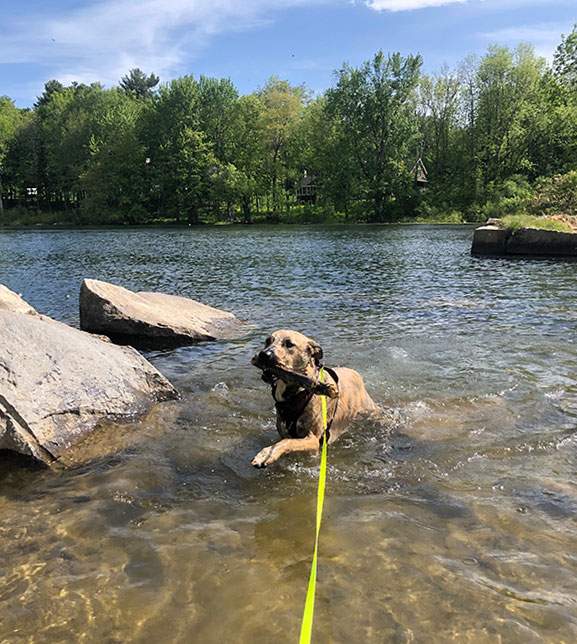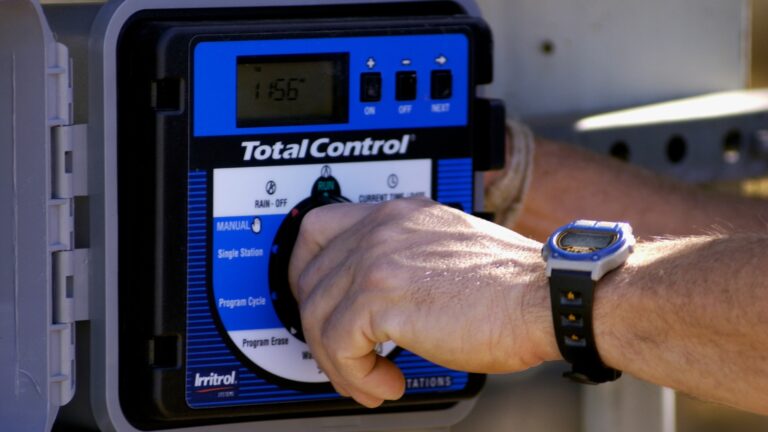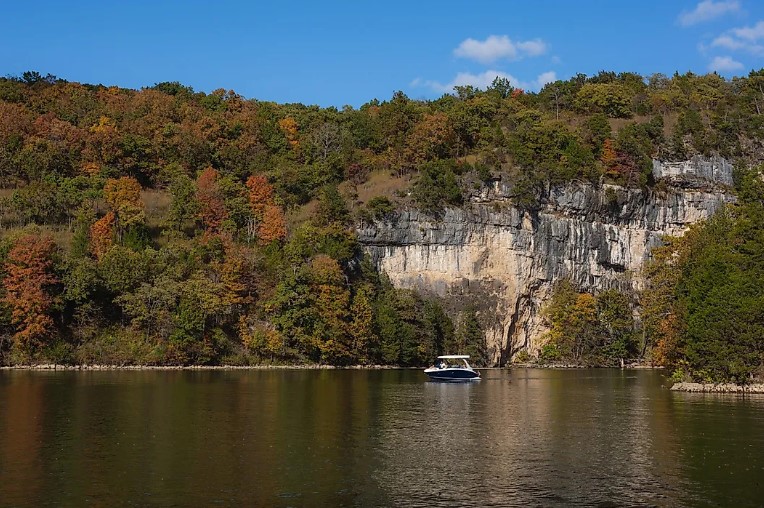Clean drinking water might be coming to Passamaquoddy reservation. There’s still trust to be built – Centralmaine.com

Report on Water Security and Sustainable Development Challenges at Sipayik
Introduction: A Failure to Meet SDG 6 (Clean Water and Sanitation)
For several decades, the Passamaquoddy Reservation at Pleasant Point (Sipayik) has faced a persistent public water crisis, failing to provide its 230 households with consistently safe and clean drinking water. This long-standing issue represents a significant failure to meet the objectives of Sustainable Development Goal 6 (SDG 6), which aims to ensure the availability and sustainable management of water and sanitation for all. The history of contamination and inconsistent quality has led to a profound and lasting deficit of trust among community members, who have been forced to adopt alternative measures to secure safe water for consumption and daily use.
Water Contamination and Public Health Implications (SDG 3 & SDG 6)
The primary water source for the reservation, Boyden Lake, is a surface water body susceptible to environmental fluctuations. This vulnerability is the root cause of the water quality issues that directly impact SDG 3 (Good Health and Well-being) and SDG 6.
- Source Vulnerability: Natural events such as heavy rainfall, drought, and beaver dams cause large fluctuations in organic materials, leading to water discoloration and contamination.
- Chemical Contamination: The interaction between chlorine used for water treatment and high levels of organic matter produces a group of chemical compounds known as Total Trihalomethanes (TTHMs).
- Health Risks: Long-term exposure to TTHMs is linked to an increased risk of cancer and problems with internal organs and the central nervous system, posing a direct threat to community health.
- Regulatory Non-Compliance: Water testing data indicates that TTHM levels frequently exceed the federal limit of 80 parts per million (ppm), with one recent test showing a 50% exceedance.
While a granular activated carbon filter was installed in 2022 to mitigate the problem, it has not been sufficient to resolve the underlying quality issues or restore public confidence.
Community Adaptation and the Erosion of Trust
The failure of the municipal system has forced residents to develop coping mechanisms that underscore the challenges to achieving SDG 11 (Sustainable Cities and Communities). The community cannot be considered sustainable or resilient when its members cannot rely on basic public services.
- Personal Filtration: Many residents, like Tom Bassett, have installed personal filtration systems and meticulously track their maintenance, yet still do not consume the tap water.
- Reliance on Purchased Water: A significant portion of the community relies on purchased bottled water for all drinking and cooking needs.
- Alternative Public Sources: In 2017, the tribe established the Samaqannihkuk Well, a public spigot providing free, tested, and safe drinking water. This has become an essential resource, with over 178,000 gallons collected by residents.
- Community Support: Wabanaki Public Health and Wellness provides a weekly distribution of clean bottled water to further supplement resident needs.
Systemic Barriers and the Pursuit of Justice (SDG 10 & SDG 16)
The tribe’s efforts to develop a new, reliable groundwater source have been impeded by systemic and political barriers, highlighting inequalities in governance and access to resources, which are central concerns of SDG 10 (Reduced Inequalities) and SDG 16 (Peace, Justice, and Strong Institutions).
- In 2014, the tribe’s attempt to test a new well on its property in the adjacent town of Perry was met with local opposition after the test impacted nearby private wells.
- In response, Perry voters passed a municipal ordinance to regulate large-scale water extraction, effectively creating a prohibitive financial and regulatory obstacle for the tribe’s water project.
- To overcome this jurisdictional barrier, the tribe successfully advocated for state law LD 906. Signed in 2022, the law amended the Maine Indian Settlement Implementing Act, affirming the tribe’s sovereignty in this matter.
- This legislative victory allows the tribe to place the land in federal trust, thereby bypassing the municipal ordinance and gaining eligibility for federal programs that support the development of clean drinking water infrastructure.
Conclusion: A Path Forward for Sustainable Water Management
Securing a safe and reliable water supply for Sipayik is fundamental to achieving multiple Sustainable Development Goals. The solution requires more than technical infrastructure; it necessitates rebuilding the community’s trust through transparent processes and verifiable results. Even if the proposed well in Perry proves to be a viable source, residents remain skeptical and demand proof of safety from trusted community members. The path forward depends on the successful federal application to place the land in trust, which will unlock critical resources. Ultimately, fulfilling the promise of SDG 6 for the Passamaquoddy Tribe at Sipayik requires a sustained commitment to recognizing tribal sovereignty, ensuring equitable access to resources, and empowering the community to lead its own sustainable water management initiatives.
Analysis of Sustainable Development Goals in the Article
-
Which SDGs are addressed or connected to the issues highlighted in the article?
The article highlights issues directly connected to several Sustainable Development Goals, primarily focusing on access to clean water, health, inequality, and governance.
-
SDG 6: Clean Water and Sanitation
This is the most central SDG in the article. The entire narrative revolves around the decades-long struggle of the Passamaquoddy Reservation at Sipayik to access safe and reliable drinking water. The text details contaminated water sources, the community’s distrust of tap water, and their reliance on filtration, purchased water, and a community well.
-
SDG 3: Good Health and Well-being
The article explicitly links the poor water quality to health risks. It mentions the presence of Total Trihalomethanes (TTHMs), chemical compounds that are byproducts of water treatment. It states that “long-term exposure is connected to an increased risk of cancer and problems with internal organs and the central nervous system,” directly connecting the water issue to health and well-being outcomes.
-
SDG 10: Reduced Inequalities
The problem is framed within the context of an Indigenous community, the Passamaquoddy Tribe, highlighting a disparity in access to a basic resource. The article discusses the political and legal hurdles the tribe faces in securing a clean water source, including conflicts with the neighboring town of Perry and the need for state-level legislation (LD 906) to assert their rights, pointing to systemic inequalities.
-
SDG 16: Peace, Justice and Strong Institutions
The article details the governance and institutional challenges related to water management. It describes the conflict between the tribe and the town of Perry, which passed an ordinance to regulate water extraction. The tribe’s successful effort to change state law (LD 906) to place land in federal trust reflects a struggle for justice and the strengthening of the tribe’s institutional capacity to manage its own resources.
-
-
What specific targets under those SDGs can be identified based on the article’s content?
The article’s content points to several specific SDG targets:
-
Target 6.1: Achieve universal and equitable access to safe and affordable drinking water for all.
The article demonstrates that this target is not being met for the Sipayik community. The water is described as “rarely safe to drink” and contaminated with silt and chemicals. Residents are forced to buy water or use alternative sources, indicating a lack of “safe” and “equitable” access.
-
Target 3.9: Substantially reduce the number of deaths and illnesses from hazardous chemicals and air, water and soil pollution and contamination.
This target is directly relevant due to the presence of TTHMs in the water supply. The article notes that these contaminant levels “rise above the federal allowable standard” and are linked to increased cancer risk and other health problems, highlighting the community’s exposure to hazardous chemicals through their water.
-
Target 10.3: Ensure equal opportunity and reduce inequalities of outcome, including by eliminating discriminatory laws, policies and practices.
The struggle over the Perry ordinance, which was “widely interpreted to be directed at the tribe,” and the subsequent passage of LD 906 to counteract it, directly relates to this target. The tribe’s actions were aimed at eliminating a policy that created an unequal outcome in their ability to access clean water.
-
Target 16.7: Ensure responsive, inclusive, participatory and representative decision-making at all levels.
The conflict with the town of Perry and the tribe’s fight for the legal authority to manage its own water source on land it owns is a clear example of seeking more inclusive and representative decision-making. The article highlights how the tribe had to appeal to the state legislature to overcome local opposition and gain control over its resources.
-
-
Are there any indicators mentioned or implied in the article that can be used to measure progress towards the identified targets?
Yes, the article contains both quantitative and qualitative indicators that can be used to measure progress.
-
Indicator for Target 6.1 and 3.9: Concentration of contaminants in drinking water.
The article provides a specific, quantitative indicator of water safety. It states that TTHM levels “jumped to over 120 parts per million (ppm) at one test site — a 50% exceedance of the federal limit of 80 ppm.” This measurement directly tracks the quality of the water and the level of chemical contamination.
-
Indicator for Target 6.1: Population reliance on alternative water sources.
The article implies a very low proportion of the population uses the tap water for drinking. It describes residents like Tom Bassett who “doesn’t drink his tap water” and Brianna Smith who says, “I don’t even give my dog the water.” Furthermore, it mentions the establishment of the Samaqannihkuk Well, which has dispensed 178,000 gallons of clean water, and the weekly distribution of bottled water. These are strong qualitative and quantitative indicators of the failure of the primary water service.
-
Indicator for Target 10.3 and 16.7: Enactment of legislation to protect rights.
The passage of the state law LD 906 serves as a clear indicator of progress. This legislation allows the tribe to bypass the local ordinance and place land into federal trust, empowering them to develop their own water source. This is a measurable legal and institutional step towards reducing inequality and enabling self-governance.
-
-
Create a table with three columns titled ‘SDGs, Targets and Indicators” to present the findings from analyzing the article.
SDGs Targets Indicators SDG 6: Clean Water and Sanitation 6.1 By 2030, achieve universal and equitable access to safe and affordable drinking water for all. - Proportion of the population not drinking tap water (implied to be very high).
- Reliance on alternative water sources (bottled water, community well).
- Volume of water collected from the community well (178,000 gallons).
SDG 3: Good Health and Well-being 3.9 By 2030, substantially reduce the number of deaths and illnesses from hazardous chemicals and air, water and soil pollution and contamination. - Concentration of Total Trihalomethanes (TTHMs) in tap water (exceeding 120 ppm against a federal limit of 80 ppm).
- Frequency of contaminant levels surpassing recommended safety standards (“once or twice each year”).
SDG 10: Reduced Inequalities 10.3 Ensure equal opportunity and reduce inequalities of outcome, including by eliminating discriminatory laws, policies and practices. - Existence of a local ordinance interpreted as being directed at the tribe to constrain water extraction.
- Passage of state law (LD 906) to counteract the local ordinance and ensure the tribe’s rights.
SDG 16: Peace, Justice and Strong Institutions 16.7 Ensure responsive, inclusive, participatory and representative decision-making at all levels. - The tribe’s successful legislative effort to change state law to gain authority over its water resources.
- The application to place land in federal trust to access federal programs and support.
Source: centralmaine.com

What is Your Reaction?
 Like
0
Like
0
 Dislike
0
Dislike
0
 Love
0
Love
0
 Funny
0
Funny
0
 Angry
0
Angry
0
 Sad
0
Sad
0
 Wow
0
Wow
0




















































.jpg.webp?itok=0ZsAnae9#)


























